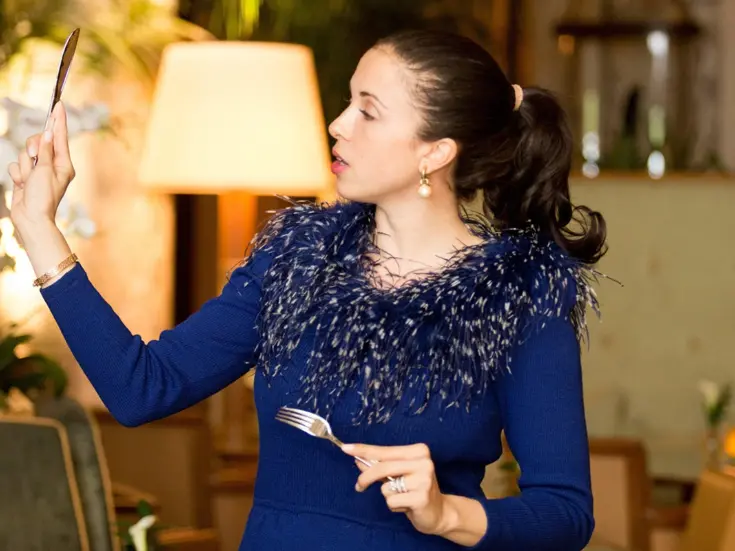
Indo-Finer
The three nations at the heart of Indochina have each put decades of strife behind them, with tourism playing a key role in their rebirth, says Duncan Forgan
AFTER DECADES OF war and deprivation, the former colonies of Indochina have each emerged, in very distinct ways, as prime tourist destinations. In Vietnam, there are blockbusting attractions such as the limestone karst-studded wonderland of Halong Bay. In Cambodia, the darkness of the recent past is being countered by increased investment and growing confidence. Meanwhile, a booming contingent of lotus-eaters from around the world have found themselves helplessly seduced by the languorous charms of sleepy Laos.

Vastly different they may be, but more links the three countries than traumatic history and optimism for the future. Until conflict disfigured these locations, a king ruled each one, and today the royal legacy of each of these destinations endures as an echo of its former self, calling to travellers.
La Residence Hotel and Spa in Hue, Vietnam
Hue
In my room in Hue’s La Residence Hotel — a magnificent art deco pile that was once the residence of the French governor of Vietnam — someone has left behind a book of poetry. Unfortunately for me, it’s all in Vietnamese. It’s not too difficult to get a handle on the subject matter, however, given that the illustrations in the book are almost a replica of the scenes I have witnessed over the past few hours. There are few locations in this beautiful country that have not been celebrated in verse, but arguably nowhere is more worthy of sonnets than the nation’s former imperial seat of power.
The Nguyen Lords, the feudal dynasty that dominated much of southern Vietnam from the 16th to the 19th century, chose their capital wisely. On the banks of the evocatively named Song Huong (Perfume River) they constructed a citadel and a lavish Oriental wonderland of tombs, temples and palaces which stand as testimony to both the dynasty’s lofty sense of aesthetics and its equally towering arrogance and disconnection with its subjects.
When the French took over in 1885, they burnt libraries and looted palaces but they also endowed the city with a leafy enclave of boulevards and grand architecture on the south side of the river. None of this beauty could stand as a bulwark against the Americans. Parts of the city were levelled during the Tet Offensive of 1968, when approximately 10,000 perished in one of the most vicious battles of the war. Afterwards, Hue somehow survived with its grandeur tarnished but largely intact.
The blackened and bullet-marked Citadel wall presents an imposing barrier and beyond it the phoenix that is Hue’s imperial heritage continues to take flight. The Forbidden Purple City, a walled compound reserved for the personal use of the emperor and his concubines, remains a sad ruin, but showpiece attractions such as the the Mieu Temple Complex have been expertly restored. In this part of the old city, ornate gates depicting dragons, demons and battle scenes lead to towering temples and peaceful pagodas.

The Citadel may be the most obvious reminder of Hue’s royal legacy, but other tokens of its past are myriad. Ho Quyen, the arena where the emperors used to watch duels between tigers and elephants, is bedraggled but still complete, while the magnificent tombs of the Nguyen kings are mind-blowing examples of the vainglorious flair of the rulers.
Sofitel Phnom Penh Phokeethra in Cambodia
Phnom Penh
It had been a long day. The distance between Ho Chi Minh City and Phnom Penh is only around 134 miles but a combination of tardy border guards, ‘flexible’ departure times and uncharacteristic (for this part of the world) careful driving had turned a six-hour mini-marathon into an altogether more trying eight-hour slog.
By the time I checked into my room at the new Sofitel Phnom Penh Phokeethra, the shadows were lengthening. On one side from my window the Tonle Sap flowed through the centre of town on its way to its confluence with the Mekong, while inland an assortment of golden spires and pagodas were bathing in the late-afternoon sun.
Cambodia’s capital has been through the mill over the past 40 years. Once known as the ‘Paris of the Orient’ due to its wide boulevards and glorious colonial architecture, the city fell under a shadow during the reign of the Khmer Rouge in the late Seventies. The ghost town took a long time to rise again, but even during the darkest times the vast compound of temples and pavilions that constitute its Royal Palace has been a replenishing source of national pride.
A king still rules Cambodia. Norodom Sihamoni occupies the throne but the real power is wielded by Hun Sen, Cambodia’s strongman prime minister. Yet while Phnom Penh’s royal heritage may be largely symbolic, the presence of the palace provides a stabilising focus of pride in a city that is evolving as fast as any in the region.
An increase in foreign investment has created a change in the skyline as gleaming office buildings and residential developments tower above tumbledown houses and low-rise examples of colonial architectural flair. The city’s bustling riverside area offers a microcosm of this shift. SUVs driven by the country’s rich elite, businessmen and the legion of NGO workers in the city jostle for space on the road alongside tuk-tuks and battered old motorbikes. Slick new bars, boutique hotels and restaurants offer a glimpse into the future while touts, beggars and limbless land-mine victims are a reminder of where Cambodia has been.

Amid all the changes, the Royal Palace provides historical context. Visit in the late afternoon when the tourist stragglers are heading for the exit and the sinking sun imbues the complex with an ethereal, almost magical, russet glow. Phnom Penh at peace is something to be savoured.
Laotian Splendour at Villa Maly, Luang Prabang, Laos
Luang Prabang
If gongs were handed out for the most beautiful cities on the planet, then Luang Prabang would be fighting it out with heavyweights such as Rio de Janeiro and Cape Town. The sunset vista from the crown of the Phu Si hill is one of the most arresting sights in the continent — from here the valley unfolds like an emerald blanket towards the mountains in the distance. Most visitors take in the tableaux at sunset before descending back into the melée of the night market for some quintessentially Lao street-food.
It’s impossible to quibble with Luang Prabang’s status as the premier tourist spot in Laos. Monks and ornate temples such as Wat Xieng Thong offer spiritual solace, lavish hotels such as Villa Maly and chic eateries up the ante in the comfort stakes while the string of open-air bars that line the Mekong river offer cold beer and cheap cocktails in a setting that bypasses convivial and moves directly to jaw-dropping.
The royal heritage here has been less impacted by the tumultuous events of the late 20th century than in Indochina’s other historical seats of monarchical power. Although the royal family was deposed by the communist Pathet Lao movement in the 1975 revolution, their palace and its surrounding gleaming temples remain intact — although most Lao won’t enter the palace after dark, believing it to be haunted by the restless spirits of its former regal residents.
The only quibble you could possibly have with the town is that it may have sacrificed a little bit of its soul in exchange for its worldwide fame. The unvarnished Luang Prabang is never far away, however — you just need to know where to look for it. A good place to start is the night market, where Lao dishes such as ping paa (grilled fish), larb (meat salad with mint), tam mak hoong (spicy papaya salad) and sticky rice are served up at criminally low prices. It is a banquet fit for a king in a city that has maintained its regal poise long after the departure of its royalty.
Duncan Forgan is a Spear’s contributor and a freelance writer based in Saigon, Vietnam








